https://drive.google.com/drive/folders/1v31_mVT3nhAerTrcIqibkIVwnZAEwsc_?usp=sharing
Blue print designs: Includes bridge, backstop, z-bracket, tines and resonance board (had to redraw resonance board and label it in Inches instead of cm for the adobe illustrator file)
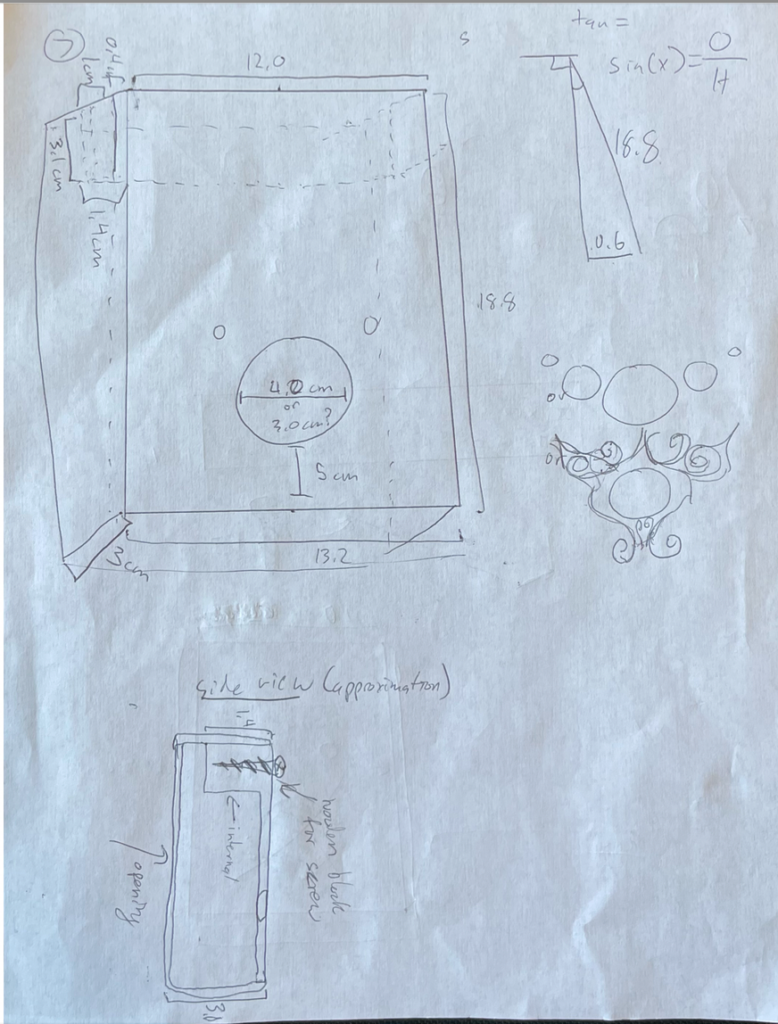
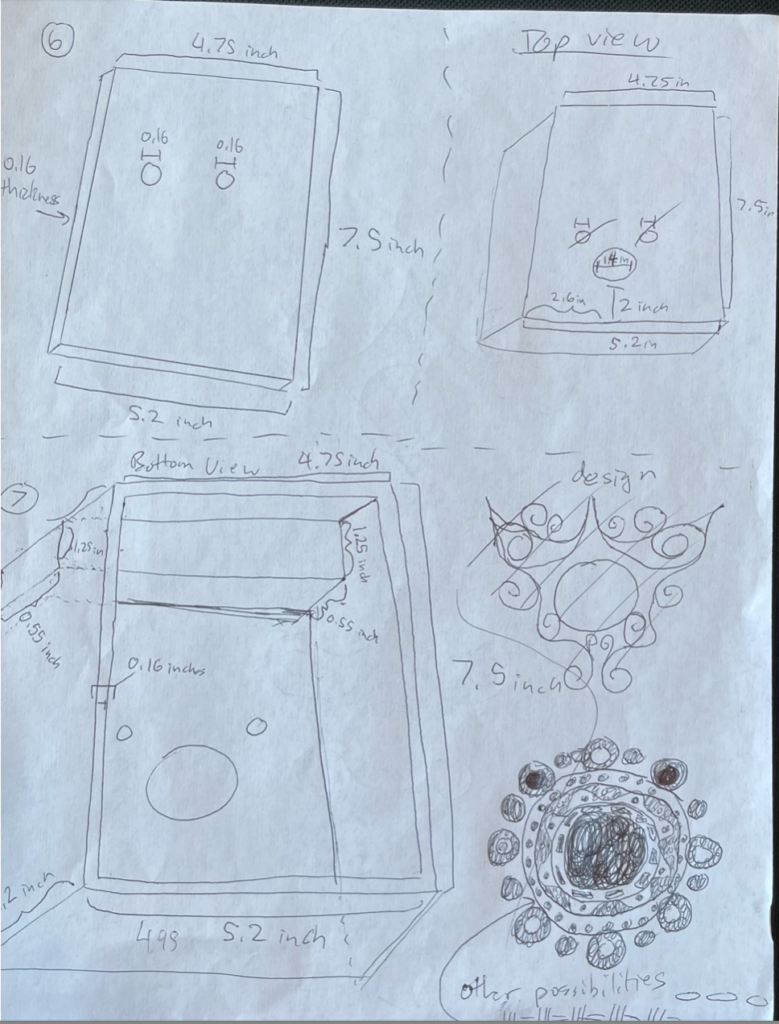

MDF Designs in Adobe Illustrator and MDF Machine Cutting out the wood pieces
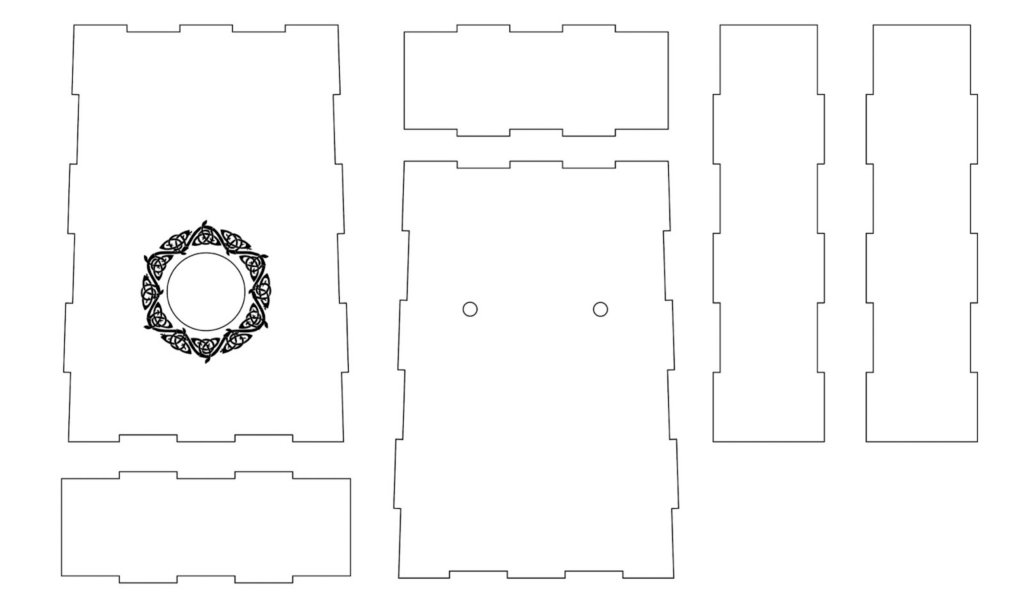
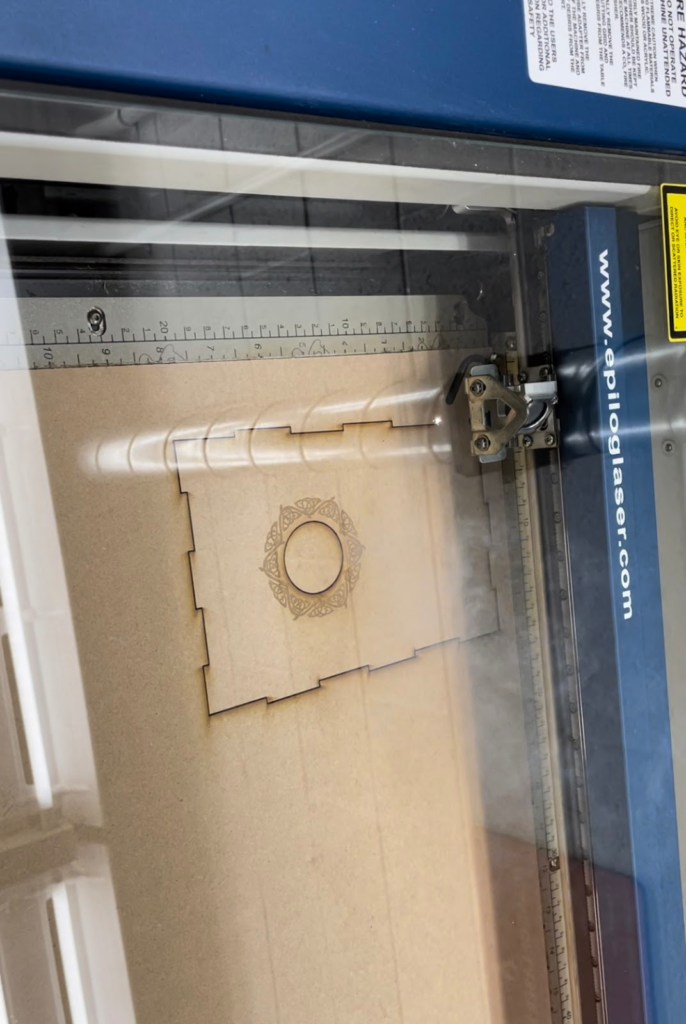
Construction of the resonance chamber using wood glue
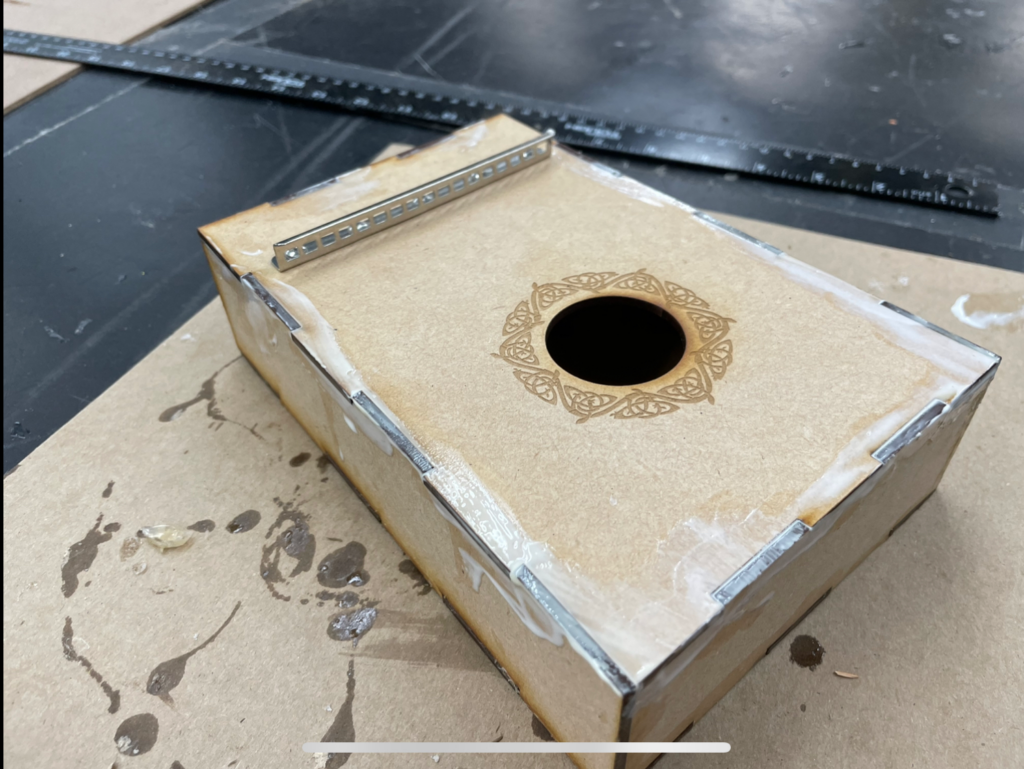
Addition of the z-bracket, bridge and backstop Addition of the tines and metal bridge-bar
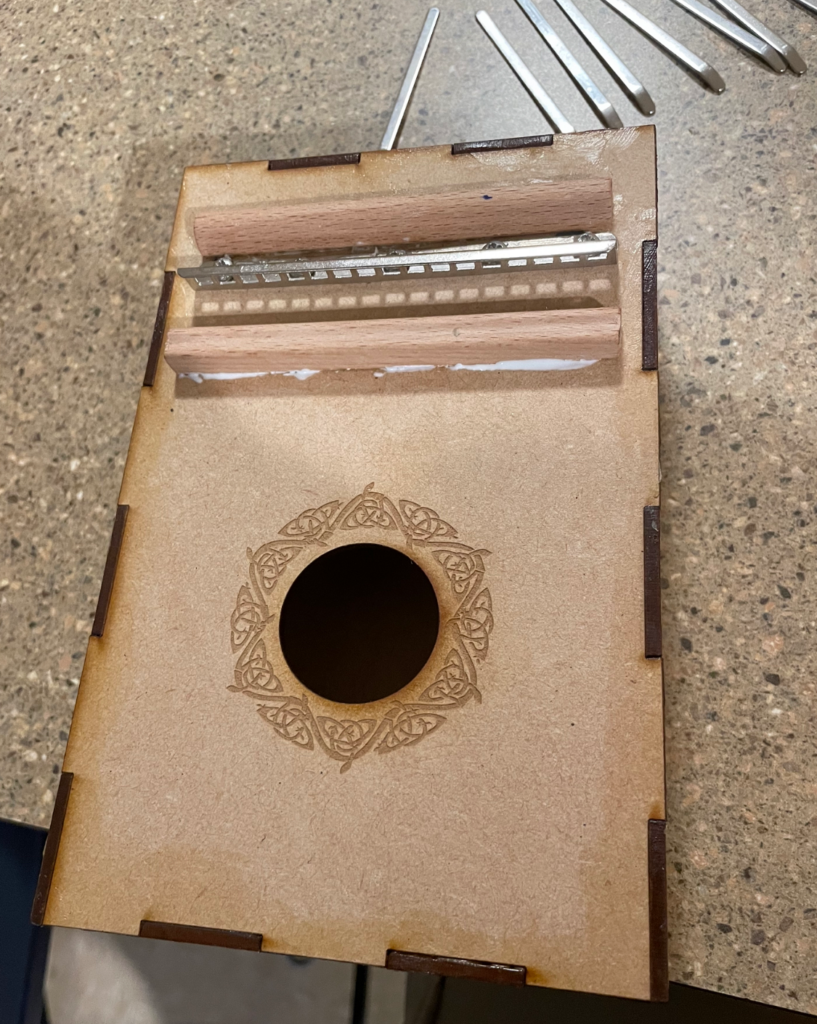
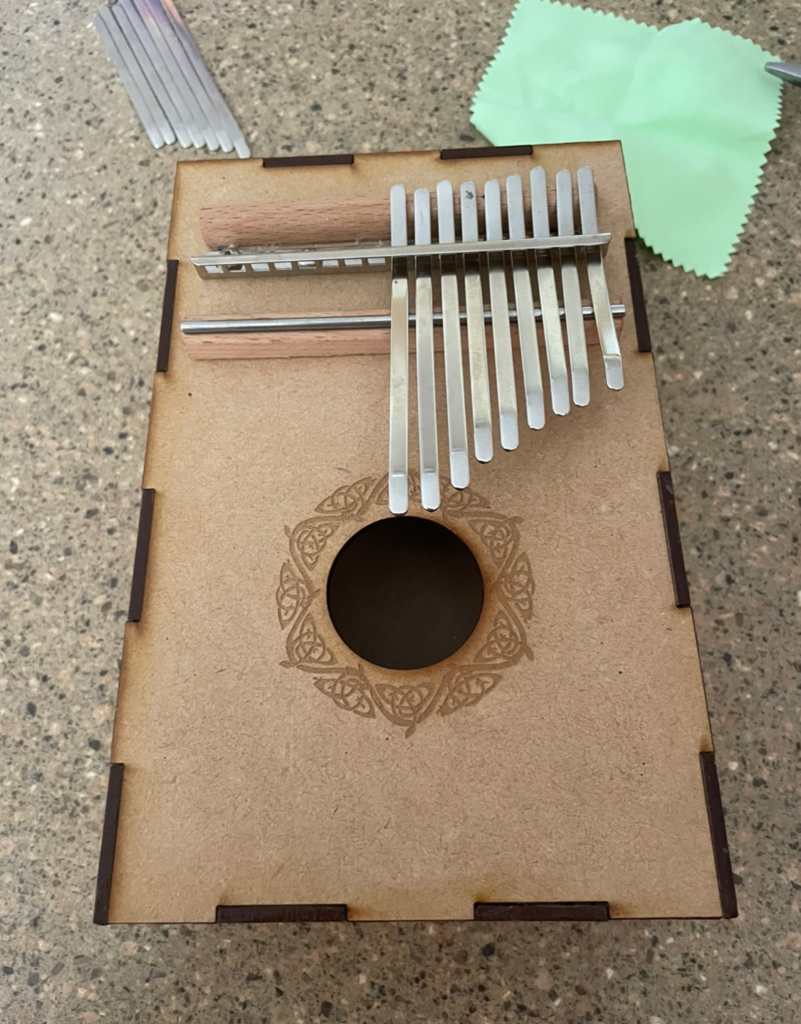
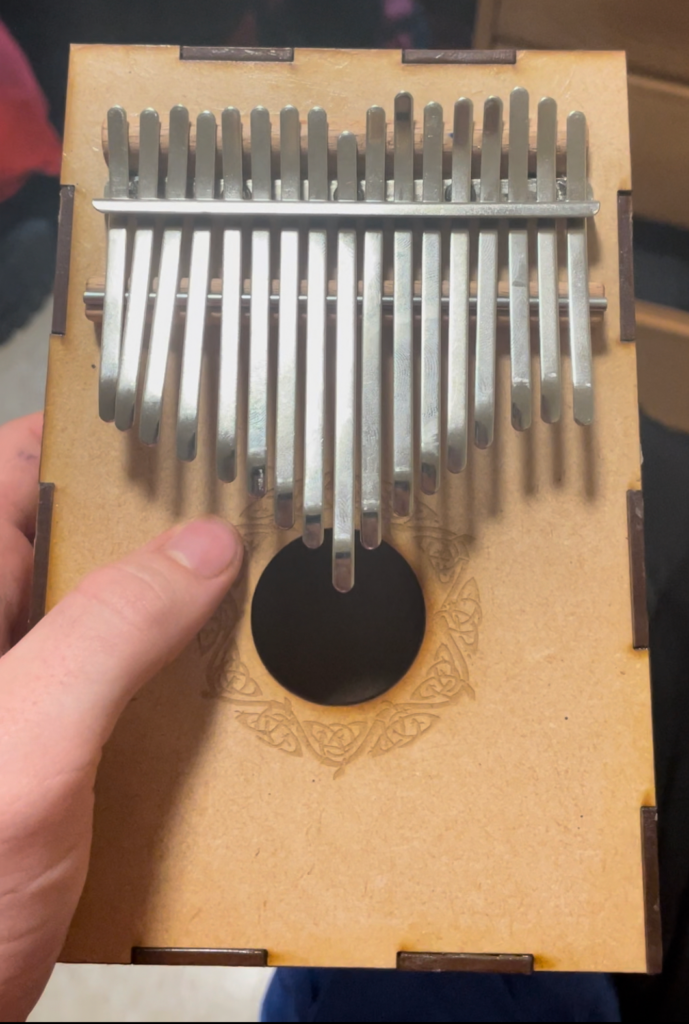
Completed product after tuning (tuning hammer on right)
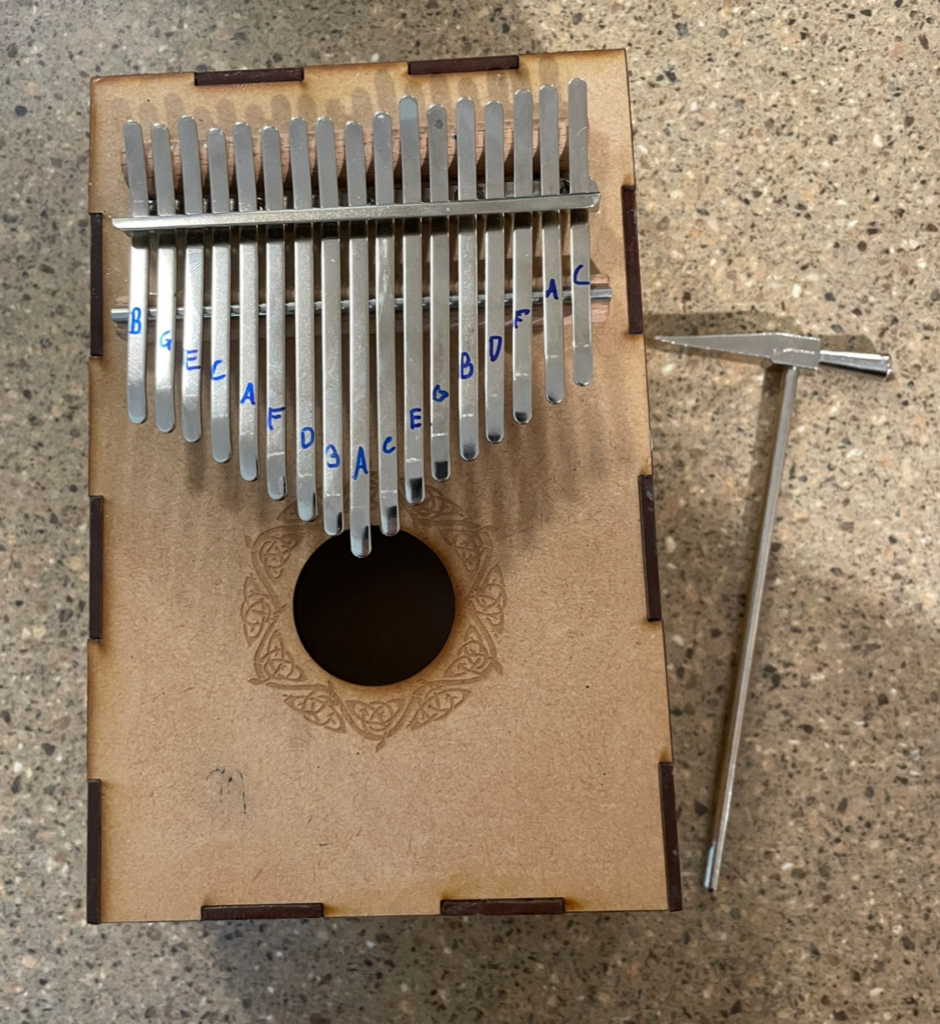
What is a kalimba?
A kalimba, also known as a thumb piano or mbira, is a small handheld percussion instrument that originated in Africa. It consists of a wooden or metal soundboard with a series of metal or wooden keys, or tines, that are plucked with the thumbs. The sound of a kalimba is produced by the vibrations of the tines, which are amplified by the resonating chamber of the soundboard.
Kalimbas come in a variety of sizes and designs, ranging from small handheld instruments to larger, more complex models with multiple layers of tines. They are often used in traditional African music, but have also been incorporated into many other genres of music, including folk, world, and popular music.
Playing the kalimba is relatively easy, as it requires no prior musical experience. The player simply plucks the tines with their thumbs or fingers to produce different notes and melodies. The kalimba is versatile and portable and has gained popularity all over the world.
Research done:
The kalimba is also known by different names in different African countries, such as mbira, likembe, sanza, or marímbula. In many African cultures, the kalimba is considered a sacred instrument with a spiritual and healing power. It is often used in traditional ceremonies and rituals, such as weddings, funerals, and initiation ceremonies. The kalimba is also used in storytelling, where it is played to accompany and enhance the narration of folk tales and myths.
The instrument has a long history in African music, dating back hundreds of years. It has been played by various ethnic groups across the continent, including the Shona people of Zimbabwe, the Bantu people of Central Africa, and the Kikuyu people of Kenya. In some cultures, the kalimba is passed down from generation to generation as a family heirloom, and is considered an important part of a community’s cultural heritage.
Materials:
The metal bar on the bridge and the 2 wooden pieces on the face of the kalimba (called the backstop and bridge) came from home depot and were cut to the right size in the Ideas Lab on campus.
The main box itself is made of 1/8 inch thick MDF whose design (including the engraving) I created in an Adobe Illustrator file with the help of some of the staff at the Ideas Lab. This file was then exported to the laser engraving machine and cut out. I then assembled it using screws and wood glue.
The only parts I didn’t design and make myself are the tines (aka the metal keys) and the z-bracket. The tines needed to be made to specific dimensions I couldn’t program for, with a specific type of metal I didn’t have access to, and the z-bracket would have been extremely difficult to make because I didn’t have the tools to bend it properly. I was able to order both of them on amazon in a kalimba tine replacement kit and it came with the metal tuning hammer seen in the last picture.
Types of Kalimbas:
One of the types are African-style kalimbas which are traditionally made from gourds or other natural materials. They are typically smaller than other types of kalimbas and have a bright, percussive sound.
There are also Electric kalimbas which are amplified and can be plugged into amplifiers or recording devices. They are pretty popular among musicians who want to incorporate kalimba sounds into their music.
The last major type of kalimba is the Chromatic kalimba. These kalimbas are tuned to a specific key in a western musical scale. These usually have 8, 15, 17, 21, or 34 tines depending on the level of detail or specificity the player wants (or their budget). The type of Kalimba I made was a 17 key chromatic kalimba.
How it is tuned:
For this particular kalimba, the keys are arranged such that the two shortest tines are on the far left and far right of the kalimba with the longest in the middle. The kalimba is tuned using a hammer or pliers by lengthening or shortening the different tines causing them to shift down or up in pitch respectively. Using a tuner of some sort (piano, tuning fork, tuning app, etc.) a typical kalimba is tuned in C major which has no sharps or flats. This means that the middle-most and lowest note is C with the immediate left set to D and the immediate right tuned to E, alternating sides up the rest of the scale. The key can be changed either by shifting all of the tines up or down and adjusting which notes are sharp or flat. This is a pretty delicate process and even the slightest adjustment can cause a note to become completely out of tune.
For my kalimba I decided to tune it to the key of A minor for a couple of reasons. The first of which is because it allowed me to play a wider array of songs in both major and minor scales. This is because while it is easy to play a song on a kalimba that is shifted down a few keys, it is impossible to play a song on one that has been shifted up because the lowest note wouldn’t be there anymore. Another reason for shifting the key was to elongate the tines across the whole kalimba. The quality of the wood and metal used in combination with the fact that it isn’t as solid or sturdy as it should be means that the tines don’t resonate when they reach a certain length. By extending all of the tines I gave myself a wider range of notes to play.
Sources:
Fleury, Jonathan. “What Are the Origins of the Kalimba?” Boullard Musique, 7 July 2022, www.boullard.ch/en/blog/what-are-the-origins-of-the-kalimba/.
Austin, Toby, and Roger Vetter. “Kalimba · Grinnell College Musical Instrument Collection · Grinnell …” Grinnell College Musical Instrument Collection: Kalimba, omeka-s.grinnell.edu/s/MusicalInstruments/item/2669.
Steve, M. “Kalimba Tines Information (How Many, Material, Spacing).” Cool Percussion, 31 Oct. 2021, coolpercussion.com/kalimba-tines-information/.
Image post that helped with coming up with the dimensions for the kalimba

